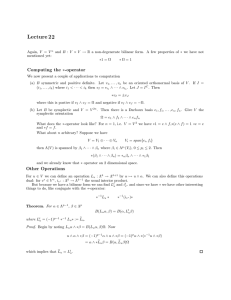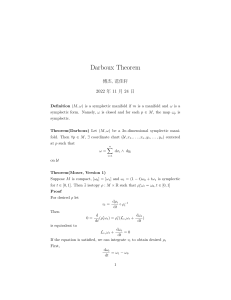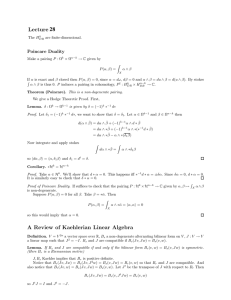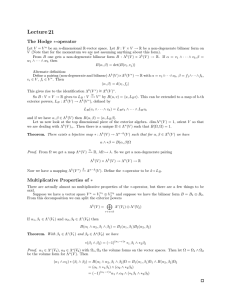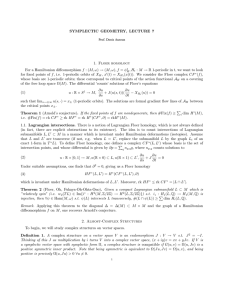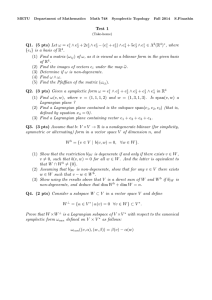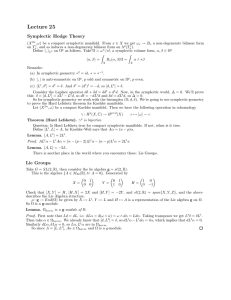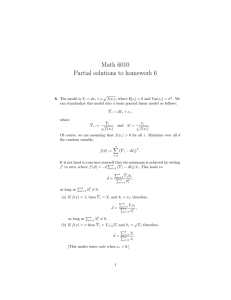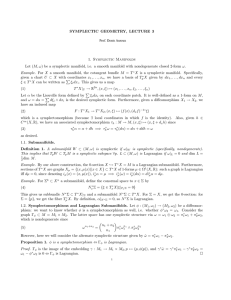24 Lecture
advertisement
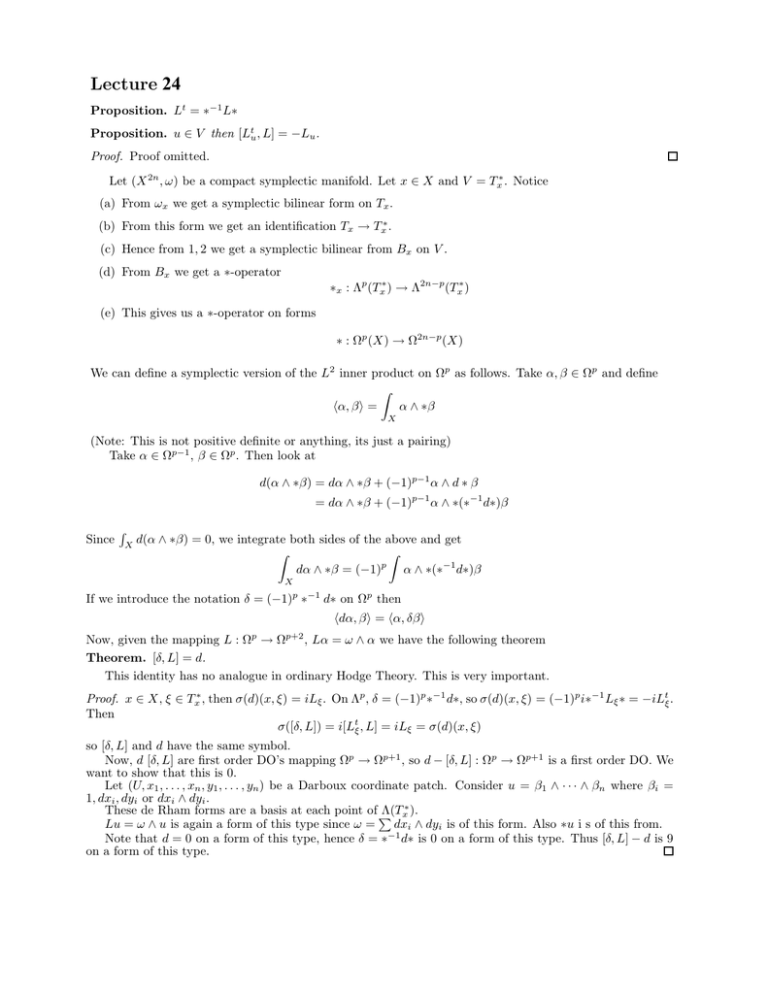
Lecture 24 Proposition. Lt = ∗−1 L∗ Proposition. u ∈ V then [Ltu , L] = −Lu . Proof. Proof omitted. Let (X 2n , ω) be a compact symplectic manifold. Let x ∈ X and V = Tx∗ . Notice (a) From ωx we get a symplectic bilinear form on Tx . (b) From this form we get an identification Tx → Tx∗ . (c) Hence from 1, 2 we get a symplectic bilinear from Bx on V . (d) From Bx we get a ∗-operator ∗x : Λp (Tx∗ ) → Λ2n−p (Tx∗ ) (e) This gives us a ∗-operator on forms ∗ : Ωp (X) → Ω2n−p (X) We can define a symplectic version of the L2 inner product on Ωp as follows. Take α, β ∈ Ωp and define � α ∧ ∗β hα, β i = X (Note: This is not positive definite or anything, its just a pairing) Take α ∈ Ωp−1 , β ∈ Ωp . Then look at d(α ∧ ∗β) = dα ∧ ∗β + (−1)p−1 α ∧ d ∗ β = dα ∧ ∗β + (−1)p−1 α ∧ ∗(∗−1 d∗)β Since � X d(α ∧ ∗β) = 0, we integrate both sides of the above and get � � p dα ∧ ∗β = (−1) α ∧ ∗(∗−1 d∗)β X If we introduce the notation δ = (−1)p ∗−1 d∗ on Ωp then p p+2 hdα, β i = hα, δβ i Now, given the mapping L : Ω → Ω , Lα = ω ∧ α we have the following theorem Theorem. [δ, L] = d. This identity has no analogue in ordinary Hodge Theory. This is very important. Proof. x ∈ X, ξ ∈ Tx∗ , then σ(d)(x, ξ) = iLξ . On Λp , δ = (−1)p ∗−1 d∗, so σ(d)(x, ξ) = (−1)p i∗−1 Lξ ∗ = −iLξt . Then σ([δ, L]) = i[Ltξ , L] = iLξ = σ(d)(x, ξ) so [δ, L] and d have the same symbol. Now, d [δ, L] are first order DO’s mapping Ωp → Ωp+1 , so d − [δ, L] : Ωp → Ωp+1 is a first order DO. We want to show that this is 0. Let (U, x1 , . . . , xn , y1 , . . . , yn ) be a Darboux coordinate patch. Consider u = β1 ∧ · · · ∧ βn where βi = 1, dxi , dyi or dxi ∧ dyi . These de Rham forms are a basis at each point of � Λ(Tx∗ ). Lu = ω ∧ u is again a form of this type since ω = dxi ∧ dyi is of this form. Also ∗u i s of this from. Note that d = 0 on a form of this type, hence δ = ∗−1 d∗ is 0 on a form of this type. Thus [δ, L] − d is 9 on a form of this type.
